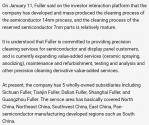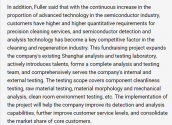It seems that most people here follow lithography with greater expertise than I do. What is holding back SMEE from fully exploring the potential of their ArF/KrF instruments and using ArF for 65 nm or KrF for 90 nm?
From my understanding, at these nodes there need to be some tricks such as OPC, which is software I believe, and for the mask, not the lithography instrument itself. Is there anything hardware related that might be holding SMEE back?
Apparently many hardware parameters affect the accuracy of lithography machine
ID 唐松:请教一下havok,之前听你说面向14nm制程的光刻机要到2024年,而上文说多次曝光可以用于14甚至7nm,这中间是不是有一些条件要达成?比如光罩之类的精度要达到才行?
ID havok:14nm对机器整体套刻精度,ArFi光源中心波长稳定性,浸液系统污染物控制等等众多指标都要求更高。不过现在有些子系统已能满足14nm的制造要求
ID Tang Song: I would like to ask havok. I heard you said that the lithography machine for the 14nm process will not be available until 2024, and the above said that multiple exposures can be used for 14 or even 7nm. Are there some conditions to be met? For example, the accuracy of the mask and the like must be achieved?
ID havok: 14nm has higher requirements for the overall engraving accuracy of the machine, the stability of the central wavelength of the ArFi light source, the control of pollutants in the immersion system, and many other indicators. However, some subsystems are now able to meet the manufacturing requirements of 14nm



